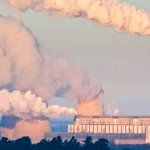According to the study, the scientists observed decreased CO2 uptake by Earth’s land and oceans in the 1990s, followed by increased CO2 sequestering by the planet from 2000 to 2010. “Seeing such variation from decade to decade tells us that we need to observe Earth’s carbon cycle for significantly longer periods in order to help us understand what is occurring,” said Ballantyne.
Scientists also are concerned about the increasing uptake of CO2 by the world’s oceans, which is making them more acidic. Dissolved CO2 changes seawater chemistry by forming carbonic acid that is known to damage coral, the fundamental structure of coral reef ecosystems that harbor 25 percent of the world’s fish species.
The study was funded by the National Research Council, the National Science Foundation (NSF) and NOAA.
A total of 33.6 billion tons of CO2 were emitted globally in 2010, climbing to 34.8 billion tons in 2011, according to the International Energy Agency (IEA). Federal budget cuts to U.S. carbon cycle research are making it more difficult to measure and understand both natural and human influences on the carbon cycle, according to the research team.
“The good news is that today, nature is helping us out,” said White, also a professor in CU’s geological sciences department. “The bad news is that none of us think nature is going to keep helping us out indefinitely. When the time comes that these carbon sinks are no longer taking up carbon, there is going to be a big price to pay.”
Details of the Study:
Source: University of Colorado Boulder.













